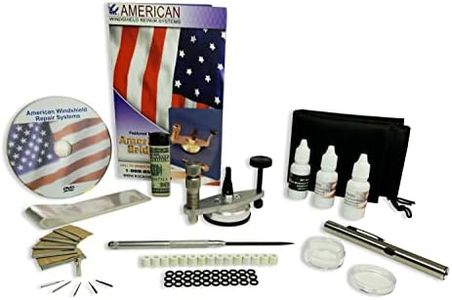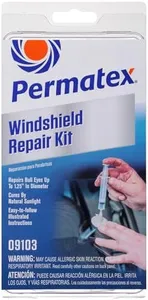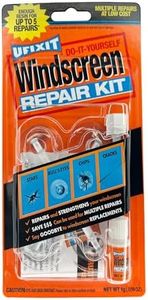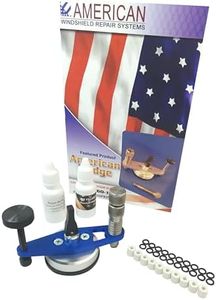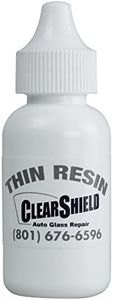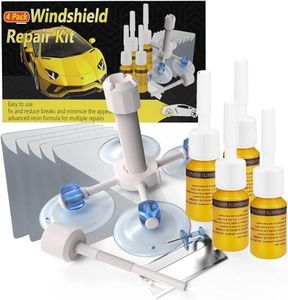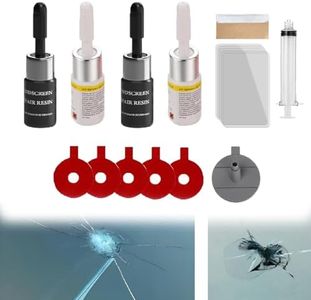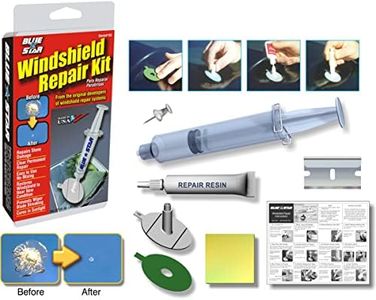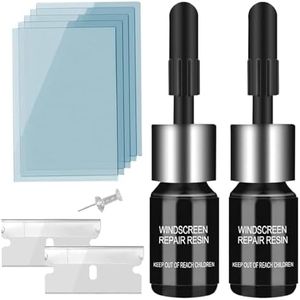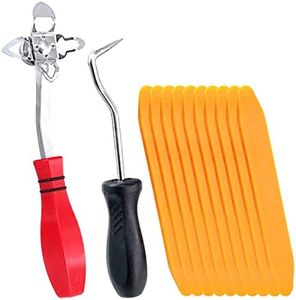We Use CookiesWe use cookies to enhance the security, performance,
functionality and for analytical and promotional activities. By continuing to browse this site you
are agreeing to our privacy policy
10 Best Windshield Repair Kits
From leading brands and best sellers available on the web.Buying Guide for the Best Windshield Repair Kits
Choosing the right windshield repair kit involves understanding your specific needs and how each kit's features and specifications can address them. The goal is to restore your windshield's clarity and strength, especially after chips or small cracks, before they spread further. By knowing what to look for and how each feature aligns with your repair situation, you can make a smart, confident choice.Type of Damage SupportedThis refers to what kind of chips or cracks the kit is designed to repair. Some kits are only suitable for small chips (like bullseye, star, or half-moon), while others may handle short cracks of a certain length. The bigger or more complex the damage, the more specialized the kit needs to be. You'll want to assess your windshield's damage and choose a kit that specifically lists compatibility with that damage type. If you have a simple stone chip, standard kits are fine; for longer cracks, look for ones that mention crack repair.
Resin QualityThe resin is the material that fills the chip or crack and bonds with the glass, restoring strength and clarity. Higher quality resins are clearer, cure stronger, and are less likely to shrink or discolor over time. Kits vary in resin quality; basic kits often come with general-purpose resin, while premium ones use advanced formulations. For cosmetic transparency and long-lasting repairs, people who care about appearance should seek high-clarity, UV-resistant resin, while those wanting the simplest fix may not mind a more basic option.
Application MethodThis is how you actually use the kit. Some use a simple dropper or syringe, while others have a bridge or injector tool that applies pressure to force the resin deep into the chip or crack. Kits with pressure applicators usually give better results but may take a bit more time and effort. If you want convenience and quick use, a basic dropper kit is easiest, but if you're willing to spend a little extra time for optimal strength and invisibility, pressure-based applicators are superior.
Curing ProcessAfter applying the resin, it needs to cure (harden), often with the help of UV light. Some kits rely on natural sunlight, while others include a UV lamp. Curing affects how well the repair holds and how quickly you can finish. If you want a fast, all-weather solution, a kit with a built-in UV light is helpful. Otherwise, if you can do the repair on a sunny day, sunlight-cured kits are simple and effective.
Ease of UseThis refers to how simple the instructions and process are for someone with no prior experience. Basic kits focus on ease and come with straightforward steps and clear visuals, while more advanced kits may require careful handling and multiple steps. If you are new to DIY repairs or want a quick fix, choose a kit marketed as beginner-friendly or easy to use. If you’re comfortable following detailed instructions for potentially better results, you might pick a more advanced option.
Amount of ProductSome kits are single-use, containing enough resin and tools for one repair, while others can fix multiple chips. If you only have one small chip, a single-use kit is sufficient; if your windshield has several small chips, choose one that contains extra resin and reusable tools for multiple repairs.
